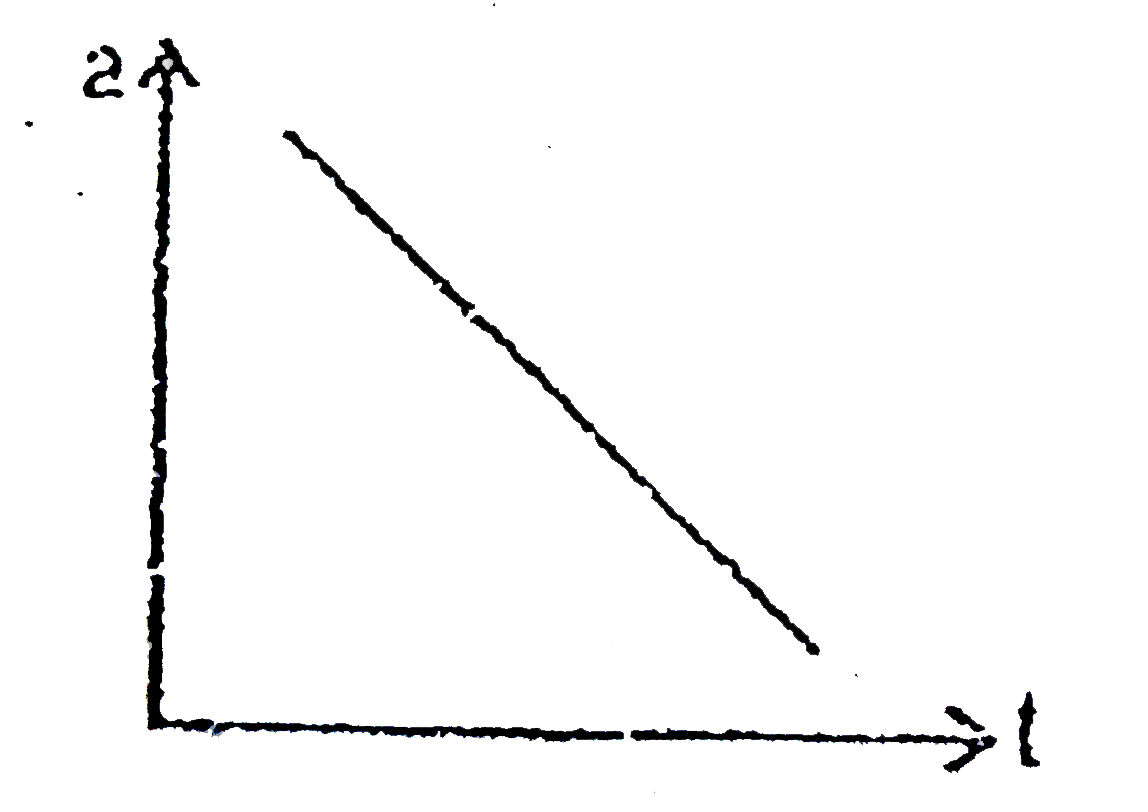Assertion : Speed of a particle may decrease, even if acceleration is increasing.
Reason: This will happen if acceleration is positive.
If the both Assertion and Reason are true and the Reason is correct explanation of the Assertion.
If both Assertion and Reason are true but Reason is not the correct explanation of Assertion.
If Assertion is true, but the Reason is false.
If Assertion is false but the Reason is true.
The correct Answer is:C
If acceleration is in opposite direction of velocity
then speed will be decreasing even if magnitude of
acceleration is increasing.
Topper's Solved these Questions
- KINEMATICSBOOK - DC PANDEYCHAPTER - KINEMATICSEXERCISE - Objective
45 Videos
- KINEMATICSBOOK - DC PANDEYCHAPTER - KINEMATICSEXERCISE - Subjective
51 Videos
- KINEMATICSBOOK - DC PANDEYCHAPTER - KINEMATICSEXERCISE - Exercise 6.9
6 Videos
- GRAVITATIONBOOK - DC PANDEYCHAPTER - GRAVITATIONEXERCISE - (C) Chapter Exercises
45 Videos
- KINEMATICS 1BOOK - DC PANDEYCHAPTER - KINEMATICS 1EXERCISE - INTEGER_TYPE
15 Videos
Similar Questions
In the following questions, a statement of assertion is followed by a statement of reason (R). Mark the correct choice as : Assertion. In a non-uniform circular motion, the acceleration of the particle is equal to sum of the tangential acceleration and the centripetal acceleration. Reason. The two accelerations are perpendicular to each other.
View SolutionAssertion : In extreme position of a particle executing S.H.M., both velocity and acceleration are zero.
Reason : In S.H.M., acceleration always acts towards mean position.
View Solution
Knowledge Check
Assertion : For a particle, acceleration-time graph gives the velocity.
Reason : Rate of change of velocity is acceleration.AIf both assertion and reason are trure and reason is the correct explanation of assertion.BIf both assertion and reason are true but reason is not the correct explanations of assertion.CIf assertion is true but reason is false.DIf both assertion and reason is falseAssertion:- A particle is moving in a circle with constant tangential acceleration such that its speed v is increasing. Angle made by resultant acceleration of the particle with tangential acceleration increases with time.
Reason:- Tangential acceleration =∣∣∣d→vdt∣∣∣ and centripetal acceleration =v2RAIf both Assertion & Reason are True & the Reason is a correct explanation of the Assertion.BIf both Assertion & Reason are True but Reason is not a correct explanation of the Assertion.CIf Assertion is True but the Reason is False.DIf both Assertion & Reason are False.Assertion :− A particle has positive acceleration it means that its speed always increases.
Reason :−Acceleration is the rate of change of speed with respect to time.AIf both Assertion & Reason are True & the Reason is a correct explanation of the Assertion.BIf both Assertion & Reason are True but Reason is not a correct explanation of the Assertiion.CIf Assertion is True but the Reason is False.DIf both Assertion & Reason are False
The speed of a particle moving in a circle is increasing. The dot product of its acceleration and velocity is
View SolutionThe acceleration time graph of a body moving in a straight is shown in figure.

Assertion :− Velocity of the body is continously increasing over the time interval shown.
Reason :− Acceleration is positive for all shown value of t.
View SolutionAssertion : We know the relation a=v.dvds . Therefore, if velocity of a particle is zero, then acceleration is also zero.
Reason : In the above equation, a is the instantaneous acceleration.
View SolutionAssertion: A uniform circular motion is an acceleration motion.
Reason: Direction of acceleration is parallel to velocity vector.
View SolutionAssertion: A particle follows only a parabolic path if acceleration is constant.
Reason : In projectile motion path is parabolic, as acceleration is assumed to be constant at low heights.
View Solution
